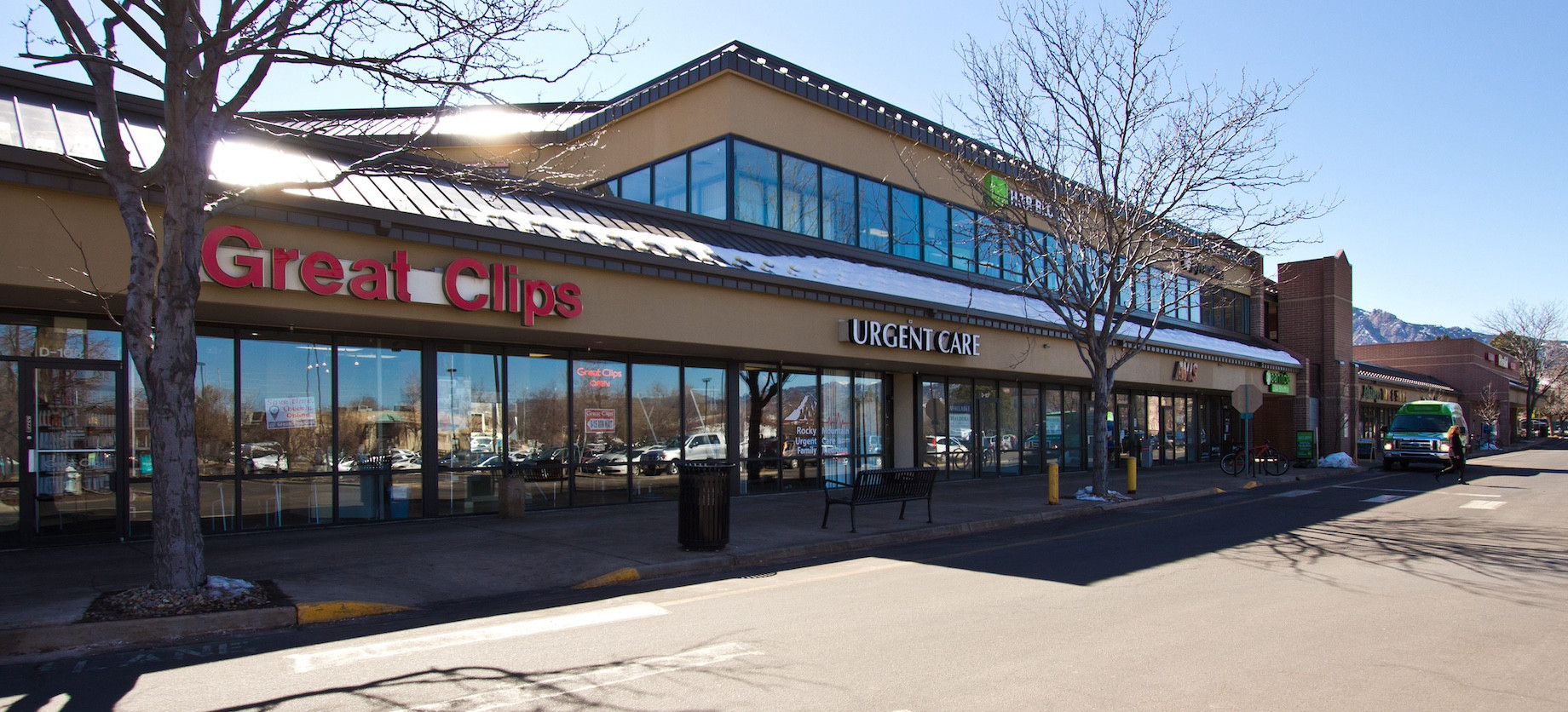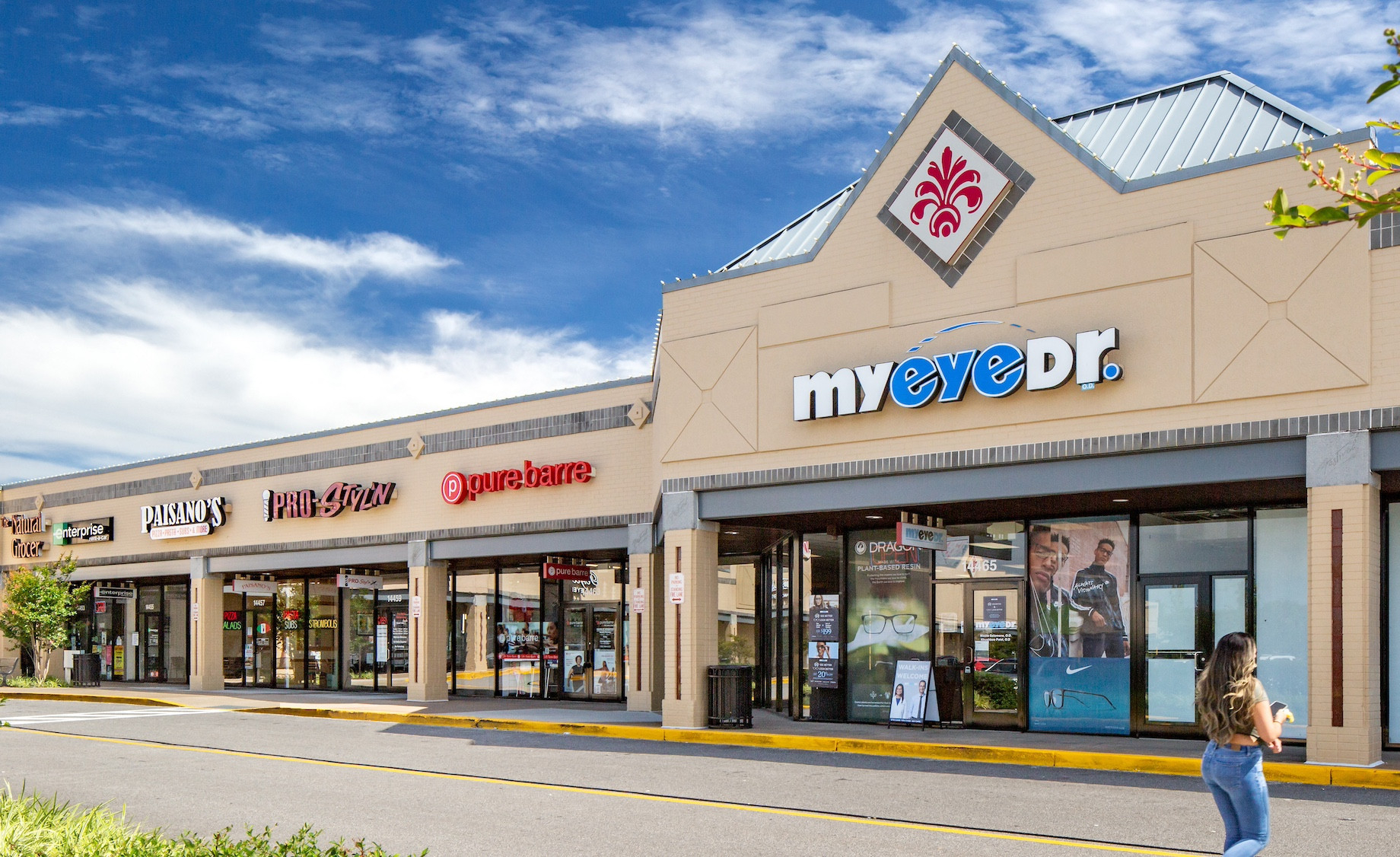Traditionally, health care providers have clustered around hospitals, but now, they also want satellite locations for more-direct access to patients. “The terms ‘neighborhood centers’ and ‘community centers’ explain why health care providers want to be in our centers,” said Rappaport CEO Gary Rappaport. “They want to locate in their patients’ neighborhood and in the center of the community.” Medical tenants first appeared in marketplaces more than two decades ago, and rising health care spending has created a big tail wind for further expansion.
Health care spending in the U.S. exceeds a whopping $4.4 trillion per year, and the Centers for Medicare & Medicaid Services forecasts that health expenditures will grow at an annual rate of 5.4% through 2031. COVID also spurred a greater focus on the health-and-wellness sector, from cryotherapy to therapeutic massage. “You have this perfect storm of factors that is going to keep demand very robust for perpetuity, which is obviously a good thing for expansion of health care and health care real estate,” said Colliers Health care Services senior vice president John Wadsworth.
Many retail property owners stand along the path of that expansion. “Medtail is one of our hottest categories, if not the hottest,” said Phillips Edison & Co. senior vice president of leasing Ron Meyers. “It’s probably had some of the most rapid expansion within our portfolio, and we don’t see a lot of slowdown.” Landlords appreciate medical tenants’ longer leases, frequency of visits, cross-shopping and resistance to e-commerce. Plus, once medical tenants find a good location, they tend to be reluctant to move.
PECO is doing deals with a number of strong credit tenants, but it’s not just the big names. Some independent and local operators like orthodontists and physical therapists are well capitalized, added Meyers. “Many of these guys have got great credit. They’re rapidly expanding, and it just seems to be a category that’s not going to go away. It’s been really strong for us.”

Phillips Edison & Co. executed two leases with American Family Care in 2023. One is in Boulder, Colorado’s Meadows on the Parkway, above, and the other was in Texas’ Coppell Market Center. AFC is a franchise concept with more than 300 urgent care locations nationwide and major expansion plans.
Retail Has the Best Locations
Landlords once looked at medical uses as a way of filling hard-to-lease space, often at reduced rents, but those days are gone. “We now seek these tenants for all of our properties and often place them in front-and-center locations at our neighborhood and community centers,” said Rappaport, who also is author of Investing in Retail Properties, the third edition of which published last month. “We’re not just adding health care providers to the shopping center; we’re emphasizing the importance of health and wellness to the customer through our tenant mix in the same way that a grocery and drugstore does today in their merchandise and service offerings.”
“Medical service providers see their competitors opening storefront locations at shopping centers, and they continue to approach us inquiring about space availability and rental terms,” he said. “We’re seeing more demand from health care providers, and this has grown even more in the post-pandemic era.”

Across its portfolio — which spans Maryland, Virginia and Washington, D.C. — Rappaport has more than 30 medical concepts, including pediatrics, urgent care, dental, chiropractic, physical therapy and sports rehab. That includes MyEyeDr. in Woodbridge, Virginia’s Potomac Festival, above, and Inova Urgent Care in Vienna Shopping Center, at top, also in Virginia.
The Affordable Care Act changed health care delivery by increasing the focus on efficiency and competition for patients. Moving care off hospital campuses is more cost efficient, and it brings care closer to the consumer. Most of Rappaport’s properties serve three- to six-mile radiuses, many of which are farther from their local hospitals. In addition, hospitals and hospital campuses often sit in dense urban areas where there’s limited ability to expand, Rappaport said.
Health care and medical groups value retail locations because they’re close to where people live, they’re visible, they’re easy to find and they’re accessible. “Patient experience is critical because there are so many choices now in health care, and as consumers, we can make our own decisions on where we go,” said Wadsworth. The No. 1 reason consumers choose providers is not the quality of the care but rather location, he added.
Co-Locating with Retail
Health care tenants appeal to CBL for their ability to drive traffic to a property. “The synergies are there just like they are with other kinds of nonretail uses,” said CBL CEO Stephen Lebovitz. “We’ve also tried to diversify away from apparel and retail to different uses, and this is a natural way to broaden the appeal to the customers in the market.”
Health care tenants also can unlock value from available land. North Carolina’s Novant Health, for example, recently acquired the former Sears at CBL’s Hanes Mall in Winston-Salem. “They bought it to give themselves expansion abilities because it is adjacent to their property where they have limited options for future expansion,” said Lebovitz. At CBL’s Brookfield Square in Milwaukee, an 18,600-square-foot, freestanding orthopedic clinic opened in 2021, and this past summer, a 70,000-square-foot Veterans Affairs primary care center opened on land adjacent to CBL’s Monroeville Mall in Pittsburgh.
Locations within marketplaces also benefit health care groups’ employees and customers. For example, HCA Healthcare opened a 48,000-square-foot training facility at CBL’s Pearland Town Center in Houston in 2021. “They liked the synergies of being part of a retail complex, the parking and other infrastructure that is available to them,” said Lebovitz. “They don't have to go in and put that in themselves.”
Location Strategies
Marketplaces have become natural fits for health care providers and medical services. Most retail properties were developed with location in mind and a follow-the-rooftops strategy. However, it’s not a one-size-fits-all solution, noted Wadsworth. Medtail groups also have different location approaches. A health care provider may not want to locate close to a competitor, and another may want such locations to grab market share. And some groups may target specific demographics. “Just because you have this great retail location doesn't necessarily mean there should be demand for it,” he said.
Like any retail-oriented business, medtail users look for locations that fit their target customers. “We do deals with these guys every day, and the feedback that we get is that they want the grocer and they want that cross-shopping. So we think that grocery gives us an advantage in attracting these tenants,” said Meyers. Certain tenants like urgent care tend to want end-cap locations that have more visibility. Others like dental, eyecare and physical therapy don’t need the premium spaces. “They’re really good inline tenants to put near a grocer, and they benefit from the grocery traffic and the cross-shopping,” said Meyers.
Views are mixed on what types of properties are good fits for medical uses. Power centers and malls can work in the right situations, though mall locations can be more difficult because health care tenants generally need exterior entrances.
What’s Holding Health Care Back
Despite the strength of demand fueled by an aging population’s increasing health care needs, the near-term expansion from health care systems is a bit of a mixed bag. “In 2023, it’s a tale of the haves and have-nots in the health system world,” said Wadsworth.
Some groups are bumping into hurdles and have slowed or paused expansion. COVID was tough on health care providers, as a shutdown on elective procedures impacted their revenue streams. The credit crunch and higher interest rates also are impeding expansion. The health systems that are in good places and have healthy balance sheets continue to expand, while many other systems are operating in the red or close to it, said Wadsworth. “It’s an extremely challenging time for hospitals right now financially, which impacts everything, including real estate and expansion projects.”
Landlords also need to apply the same thoughtful merchandising strategies when working with health care tenants, cautioned Wadsworth. Is the brand and use a good long-term fit for the property? Another factor for landlords to consider is that there is a huge capital expense to repositioning a retail box or retail location to a health care use. Even for an empty retail space in white-box condition, the infrastructure-development cost for some medical specialties is $200 to $300 per square foot, he said.
“The demand [for these services] is there, which is great for all landlords who serve health care tenants,” said Wadsworth. “What’s going to keep a cap on that demand are all of the outside influences from the macroeconomy.”
By Beth Mattson-Teig
Contributor, Commerce + Communities Today